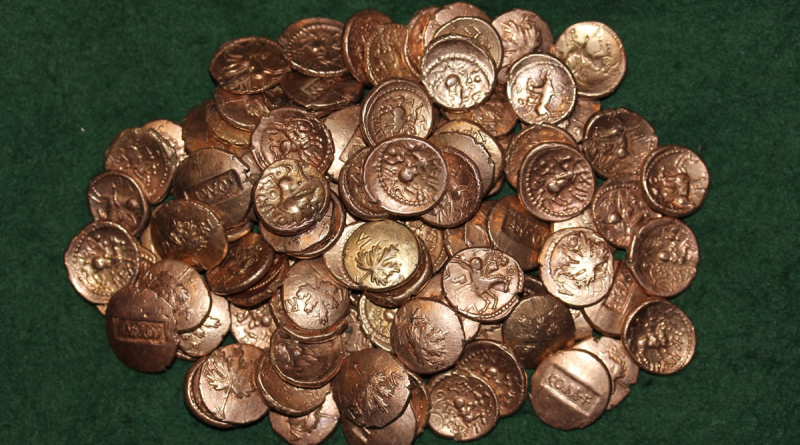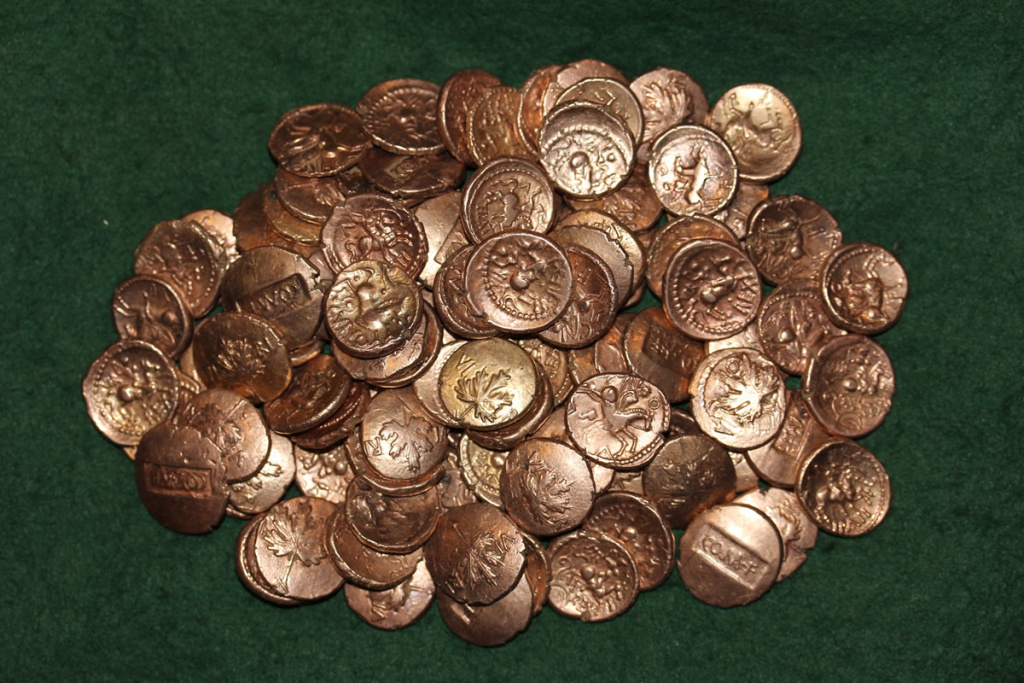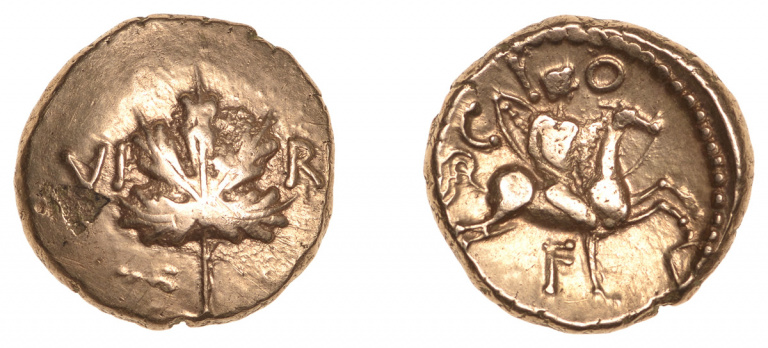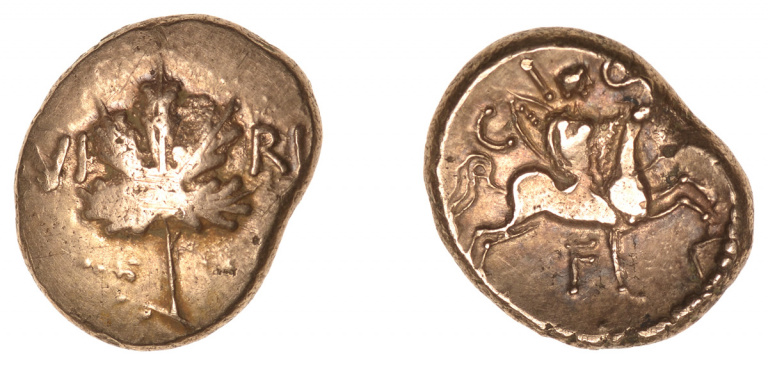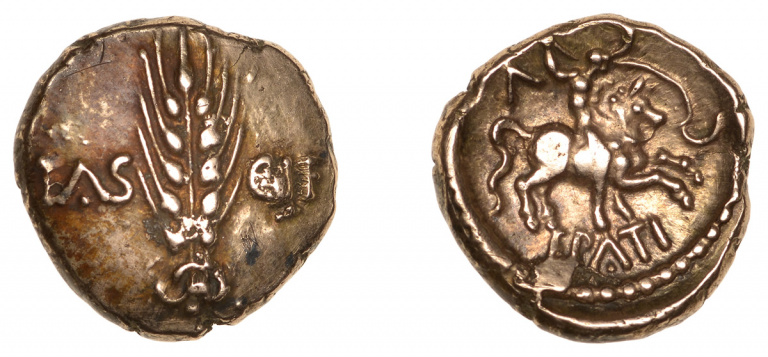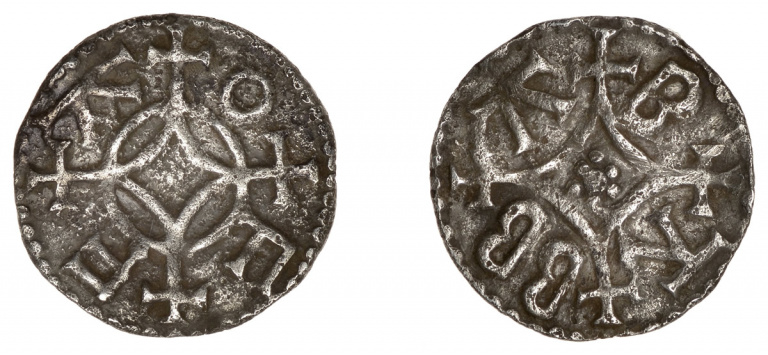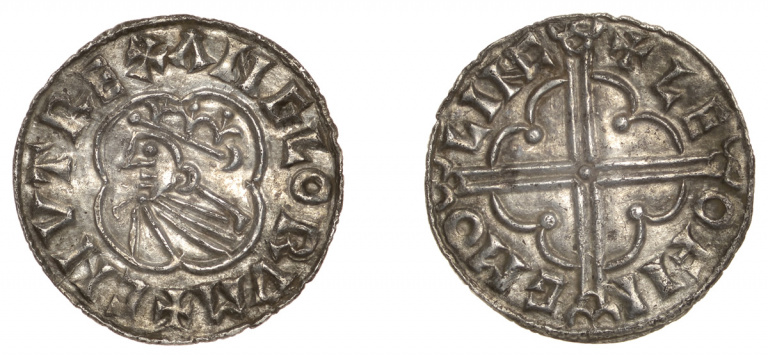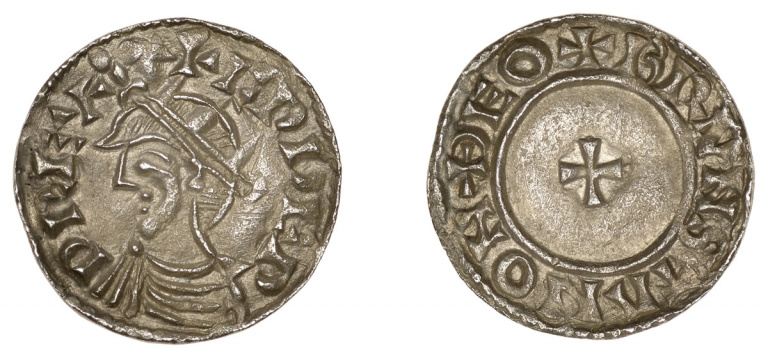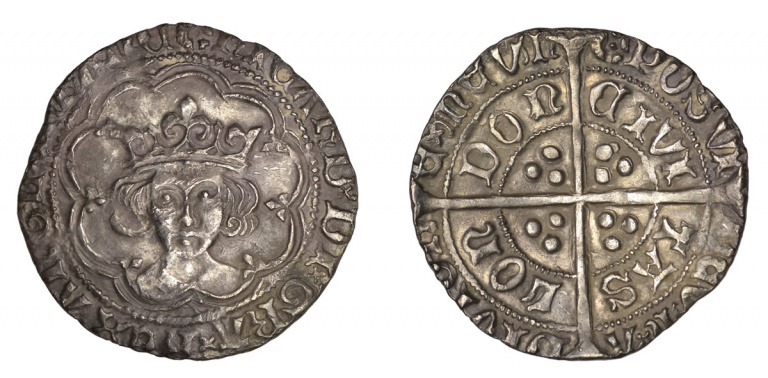DNW auction includes Chawton Hoard coins
DNW auction includes Chawton Hoard coins
DNW held an auction of coins, tokens and historical medals on 1 & 2 February 2022 . The full catalogue can be found here.
There is a buyer’s premium of 24 % (plus VAT) on the hammer price.
Chawton Hoard
Eight of the lots are from the Chawton hoard, which was found by detectorists in the winter of 2011/12.
The Find
On 22nd October 2011 a single gold coin was found on farmland near Chawton in Hampshire. A further 104 gold coins were discovered on the same spot between 10th December 2011 and 7th January 2012 by Neil Angel, Edward Neish and John Rhodes. These were recorded at the PAS as HAMP-6DFB33 and declared treasure (2012T43). A futher, 20 coins were unearthed in 2019 (HAMP-192454 ,2021T362). All the coins were disclaimed.
The hoard
The first part of the hoard consists of 105 gold staters: 98 of Verica, 6 of Epaticcus and 1 of Cunobelin. It has been named the “Vine Leaf Hoard”, although only half the coins are of the vine leaf type. It is thought that the vine leaf referred to Verica’s love of Italian wine and his close friendship with Rome.
Historical background
From around 10AD to 43AD, Verica was ruler of the Atrebates who were based in central southern England (Hampshire and surrounding counties). He is believed to be the third son of Commius (although this does require Commius to have lived a very long life). When Julius Caesar conquered the Atrebates in Gaul in 57BC, he appointed Commius as king of the tribe. They eventually fell out and Commius fled to England and by about 30BC he had become king of the Atrebates in England. His first two sons, Tincomarus and Eppillus, succeeded him and their coinage suggests a close alignment with Rome.
Therefore, the Romans left Britain alone because the Atrebates occupied land south of the Thames and they were ruled by allies.
The hoard is thought to have been buried in AD42/43 during the unrest following the Catuvellaunian expansion into Atrebatic territory. After Epaticcus captured Verica’s capital, he fled to Rome. Verica persuaded Claudius to support him which led to the Roman conquest of Britain in AD 43.
Lots from the Chawton hoard
Four of the coins (lots 10 – 13) are COMF tablet (ABC 1190) and three (lot 14 – 16) are Vine Leaf type (ABC 1193). Both types refer to Verica being the son of Commius, with COM F on the obverse of one and C O F on the reverse of the other. This is the abbreviated form ‘Commius Filius’ (Son of Commius). Verica’s brother, Eppilus, had a similar inscription on his coins.
The final lot (18) is a stater of Epaticcus.
Detecting finds
Some recent detecting finds included in the auction:

